Pace American Shadow Gt 36' foot Gooseneck Racecar Hauler
Offers delivery
Pet friendly
36 ft. long
Goose neck, triple axle with fold down rear door (ramp).*Ford Dually shown in the pictures is not included.Four (4) major tie-down points for a single (1) automobile and room for multiple toys, motorcycles & gear.This is a car hauler / race car trailer. It has a beaver tail rear and a very low ramp/door to accommodate rolling race cars and exotics/supercars up/down without problem.- If you need more than the four primary tie-downs, there are tie-down rails that are appropriate for lighter loads (not cars).- If you have specific tie-down requirements please message me; I am happy to attempt to make arrangements for additional tie-downs, this may take some additional time to install so please plan accordingly. This may require an additional charge but maybe not, it depends on the ask.- There are no sleeping quarters, nor bathroom, nor kitchen, nor other living amenities in this trailer. You can certainly roll your sleeping bags out in the overhead though (ask me how I know ;-).- if you need it vinyl wrapped for a special event, let me know WAY in advance and expect to pay for the wrap plus its removal.What's includedDetailed Specifications:
Overall Length. 36'
Interior Length. 35'9"
Box Width/OA Width. 8’3” / 8’6”
Overall Height. 8’5”
Interior Width. 8’ / 6’9” (between wells)
Interior Height (center of roof bows). 6’5”
Rear Doors. Ramp
Rear Door Width. 88”
Axles. 5000# triple
Brakes. Electric
Frame. 8” I-Beam
Tire Size. ST225 75R15 LRD
Hitch Ball Size. 2-5/15” Ball, 2“ Pin Box w/ Landing Gear
Curb Weight. 6250#
Hitch Weight. 1250#
Exterior. .030 Smooth
Floor. 3/4" Plywood
Payload Capacity. 8750#
GWVR. 15,000#
Lower Deck Box Length. 27'9"
Sidewall Height. 76-1/8"
Riser Wall Height. 45"
Attic Interior Height. 32”It has enough room to put a single medium sized car and a two bedroom apartment worth of stuff in it. Or a 4 bedroom house (plus garage) with no car.Researching these older Pace Americans trailers, you'll find they were of very high quality. The company collapsed after the 2008 economic crisis and in 2011 Look Trailers purchased the name and their manufacturing facility.
RecommendationsThe main pre-flight & enroute checks include:Before driving:
1. Hitch & mount attachment
2. Emergency (seperation) brake engagement cable
3. Tires
4. Lights & reflectors
5. Clearances
6. Cargo secured
7. Doors closed and secured
8. Physical conditionDuring Trip:
1. All the above plus:
2. Tire inspection (tread, sidewall)
3. CHECK TEMPERATURES on all 3 axles + both on your truck: (I include a temp gun & log book which you must use after the first 50 miles, then every 100~300 miles as needed)
a. Tires
i. Sidewall temps should be lower than 150ºf and should never be above 180ºf (unfortunately these numbers are based on multiple Internet searches
ii. Trailer tires normally have a max operating temp of about 170ºf and keep in mind that is the internal temp.. rubber doesn't conduct heat well, thus you may see a much lower temp on the outside of the tire because of this and also because of air flowing around the tire.
iii. In all operating conditions, you should expect to see tire temps from 40º-70º above ambient.. which means if it's a 100ºf day, you can expect the tires to be up in the 140-170º range.
b. Bearings: Hub temps (in Fahrenheit)
i. Normal range: 120º to <160º
ii. Above normal: >160º to <200º (adjust load, make more frequent stops/checks)
iii. Bearing life dramatically shortened & damage may occur: >200º (contact owner immediately to discuss options/next steps)
iv. Hub/axle replacement necessary (potential fire/failure hazard): 250º and above (get your checkbook out). Note: there are overtemp indicators on the hubs.
c. Brakes: Using an infrared gun, the outer surface of the drum will vary wildly from the low 100ºf's to 350ºf. If I had to stick a specific number on moderate usage (highways, no sudden stops, no hills) a typical temp will be around 180ºf-240ºf and heavier use (mountains, riding the brakes) will go >240º to 350º. They should not really go above that unless some serious emergency braking occurs.General Brake Temperatures:
Note: Temperatures indicated are at the lining/drum interface and are approximate.
550°F - 650°F - Brake resin odor is present
850°F - Brakes begin to smoke
1,100°F - Brake oxidation occurs at parts of the brake open to air rushing by
1,250°F - Drums become cherry-red internally
+1,250°F - Danger of run-away due to excess drum expansionI include a temp gun & log book which you must use after the first 50 miles, then every 100~300 miles as needed.* The "as needed" part needs some additional explanation. It generally means that if the temps are near the high end or outside of the normal operating range, or if the appearance of the tires changes, you will need to slow down, lighten the load, or arrange for repairs (contact me), depending on the specific situation/condition.I hesitate to say this however: Use your head... use common sense.. don't be flippant/dismissive/tuned-out. Nothing I write here, nothing on the Web, nothing in *any* manual can supplant your own common sense and ability to acutely gauge the situation. When in doubt, give me a call and I will be very willing to help or guide you to ensure safe operation and condition of my trailer. :-)Other things to noteTriple axles seem to have reputation that is negative compared to double axle trailers. This is simply unjustified. This trailer is remarkably stable on the highway.Triples get this negative rep because when turning (especially in tight reverse turns when backing into a driveway, or 90º turns at intersections) they tend to pivot on the front and middle axles ..as this is closest to the tow vehicle (highly dependent upon trailer load balance). This causes a "scrubbing" of the rear axle's tires (they get dragged laterally). For this reason tires on the rear axle of a triple typically wear out faster.This is a pretty long trailer (but not crazy long) trailer and so being familiar with pulling a gooseneck or a fifth-wheel is a plus.- I recommend (not mandatory) using a one-ton dually truck with a long bed when towing this trailer. While it is not a requirement, the safety factor is substantially higher. Also, 2wd trucks tow nicer than 4x4
- This requires a 3/4 ton, 1 ton, or higher truck with a gooseneck hitch.
- Because the overhang is "full size" a long bed pickup (or one specifically designed to tow gooseneck/5th-wheel trailers) is required.- If you attempt to pull this trailer with a short bed truck your turn radius is greatly reduced and you can easily damage the trailer and your truck if you attempt a tight turn.
Goose neck, triple axle with fold down rear door (ramp).*Ford Dually shown in the pictures is not included.Four (4) major tie-down points for a single (1) automobile and room for multiple toys, motorcycles & gear.This is a car hauler / race car trailer. It has a beaver tail rear and a very low ramp/door to accommodate rolling race cars and exotics/supercars up/down without problem.- If you need more than the four primary tie-downs, there are tie-down rails that are appropriate for lighter loads (not cars).- If you have specific tie-down requirements please message me; I am happy to attempt to make arrangements for additional tie-downs, this may take some additional time to install so please plan accordingly. This may require an additional charge but maybe not, it depends on the ask.- There are no sleeping quarters, nor bathroom, nor kitchen, nor other living amenities in this trailer. You can certainly roll your sleeping bags out in the overhead though (ask me how I know ;-).- if you need it vinyl wrapped for a special event, let me know WAY in advance and expect to pay for the wrap plus its removal.What's includedDetailed Specifications:
Overall Length. 36'
Interior Length. 35'9"
Box Width/OA Width. 8’3” / 8’6”
Overall Height. 8’5”
Interior Width. 8’ / 6’9” (between wells)
Interior Height (center of roof bows). 6’5”
Rear Doors. Ramp
Rear Door Width. 88”
Axles. 5000# triple
Brakes. Electric
Frame. 8” I-Beam
Tire Size. ST225 75R15 LRD
Hitch Ball Size. 2-5/15” Ball, 2“ Pin Box w/ Landing Gear
Curb Weight. 6250#
Hitch Weight. 1250#
Exterior. .030 Smooth
Floor. 3/4" Plywood
Payload Capacity. 8750#
GWVR. 15,000#
Lower Deck Box Length. 27'9"
Sidewall Height. 76-1/8"
Riser Wall Height. 45"
Attic Interior Height. 32”It has enough room to put a single medium sized car and a two bedroom apartment worth of stuff in it. Or a 4 bedroom house (plus garage) with no car.Researching these older Pace Americans trailers, you'll find they were of very high quality. The company collapsed after the 2008 economic crisis and in 2011 Look Trailers purchased the name and their manufacturing facility.
RecommendationsThe main pre-flight & enroute checks include:Before driving:
1. Hitch & mount attachment
2. Emergency (seperation) brake engagement cable
3. Tires
4. Lights & reflectors
5. Clearances
6. Cargo secured
7. Doors closed and secured
8. Physical conditionDuring Trip:
1. All the above plus:
2. Tire inspection (tread, sidewall)
3. CHECK TEMPERATURES on all 3 axles + both on your truck: (I include a temp gun & log book which you must use after the first 50 miles, then every 100~300 miles as needed)
a. Tires
i. Sidewall temps should be lower than 150ºf and should never be above 180ºf (unfortunately these numbers are based on multiple Internet searches
ii. Trailer tires normally have a max operating temp of about 170ºf and keep in mind that is the internal temp.. rubber doesn't conduct heat well, thus you may see a much lower temp on the outside of the tire because of this and also because of air flowing around the tire.
iii. In all operating conditions, you should expect to see tire temps from 40º-70º above ambient.. which means if it's a 100ºf day, you can expect the tires to be up in the 140-170º range.
b. Bearings: Hub temps (in Fahrenheit)
i. Normal range: 120º to <160º
ii. Above normal: >160º to <200º (adjust load, make more frequent stops/checks)
iii. Bearing life dramatically shortened & damage may occur: >200º (contact owner immediately to discuss options/next steps)
iv. Hub/axle replacement necessary (potential fire/failure hazard): 250º and above (get your checkbook out). Note: there are overtemp indicators on the hubs.
c. Brakes: Using an infrared gun, the outer surface of the drum will vary wildly from the low 100ºf's to 350ºf. If I had to stick a specific number on moderate usage (highways, no sudden stops, no hills) a typical temp will be around 180ºf-240ºf and heavier use (mountains, riding the brakes) will go >240º to 350º. They should not really go above that unless some serious emergency braking occurs.General Brake Temperatures:
Note: Temperatures indicated are at the lining/drum interface and are approximate.
550°F - 650°F - Brake resin odor is present
850°F - Brakes begin to smoke
1,100°F - Brake oxidation occurs at parts of the brake open to air rushing by
1,250°F - Drums become cherry-red internally
+1,250°F - Danger of run-away due to excess drum expansionI include a temp gun & log book which you must use after the first 50 miles, then every 100~300 miles as needed.* The "as needed" part needs some additional explanation. It generally means that if the temps are near the high end or outside of the normal operating range, or if the appearance of the tires changes, you will need to slow down, lighten the load, or arrange for repairs (contact me), depending on the specific situation/condition.I hesitate to say this however: Use your head... use common sense.. don't be flippant/dismissive/tuned-out. Nothing I write here, nothing on the Web, nothing in *any* manual can supplant your own common sense and ability to acutely gauge the situation. When in doubt, give me a call and I will be very willing to help or guide you to ensure safe operation and condition of my trailer. :-)Other things to noteTriple axles seem to have reputation that is negative compared to double axle trailers. This is simply unjustified. This trailer is remarkably stable on the highway.Triples get this negative rep because when turning (especially in tight reverse turns when backing into a driveway, or 90º turns at intersections) they tend to pivot on the front and middle axles ..as this is closest to the tow vehicle (highly dependent upon trailer load balance). This causes a "scrubbing" of the rear axle's tires (they get dragged laterally). For this reason tires on the rear axle of a triple typically wear out faster.This is a pretty long trailer (but not crazy long) trailer and so being familiar with pulling a gooseneck or a fifth-wheel is a plus.- I recommend (not mandatory) using a one-ton dually truck with a long bed when towing this trailer. While it is not a requirement, the safety factor is substantially higher. Also, 2wd trucks tow nicer than 4x4
- This requires a 3/4 ton, 1 ton, or higher truck with a gooseneck hitch.
- Because the overhang is "full size" a long bed pickup (or one specifically designed to tow gooseneck/5th-wheel trailers) is required.- If you attempt to pull this trailer with a short bed truck your turn radius is greatly reduced and you can easily damage the trailer and your truck if you attempt a tight turn.
2006 Pace American Shadow Gt
Length
36 ft
36 ft
Connector
7pin
7pin
Receiver
Not provided
Not provided
Brake Controller
Not provided
Not provided

Sleeping arrangements
Other
2
2
Amenities
- Leveling jacks
- Extra storage
- Leveling jacks
- Extra storage
Nearby places to stay
Chapel Hill, NC • Exact location provided after booking
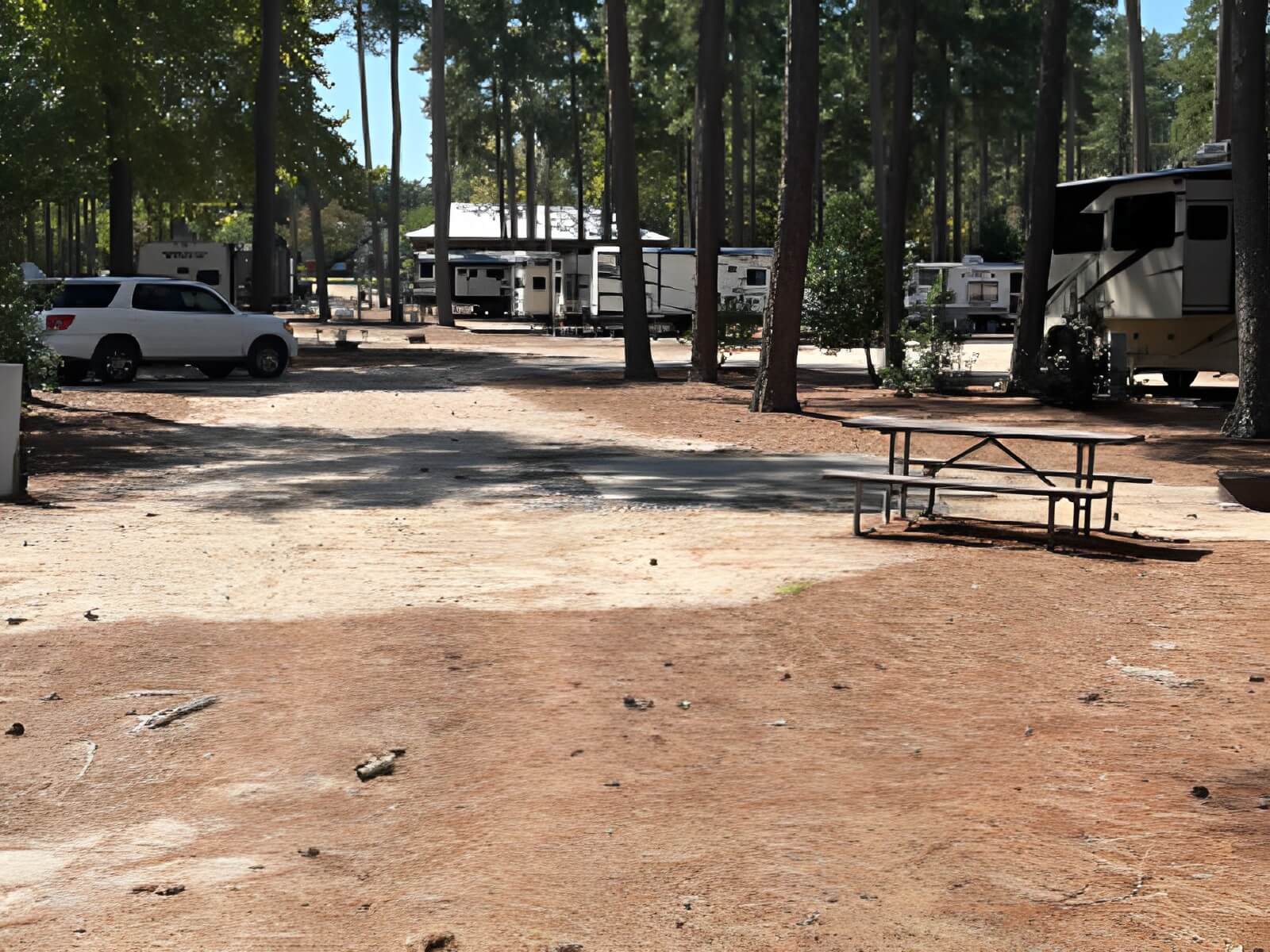
1. Sycamore Lodge Resort
Jackson Springs, NC • 64 miles away
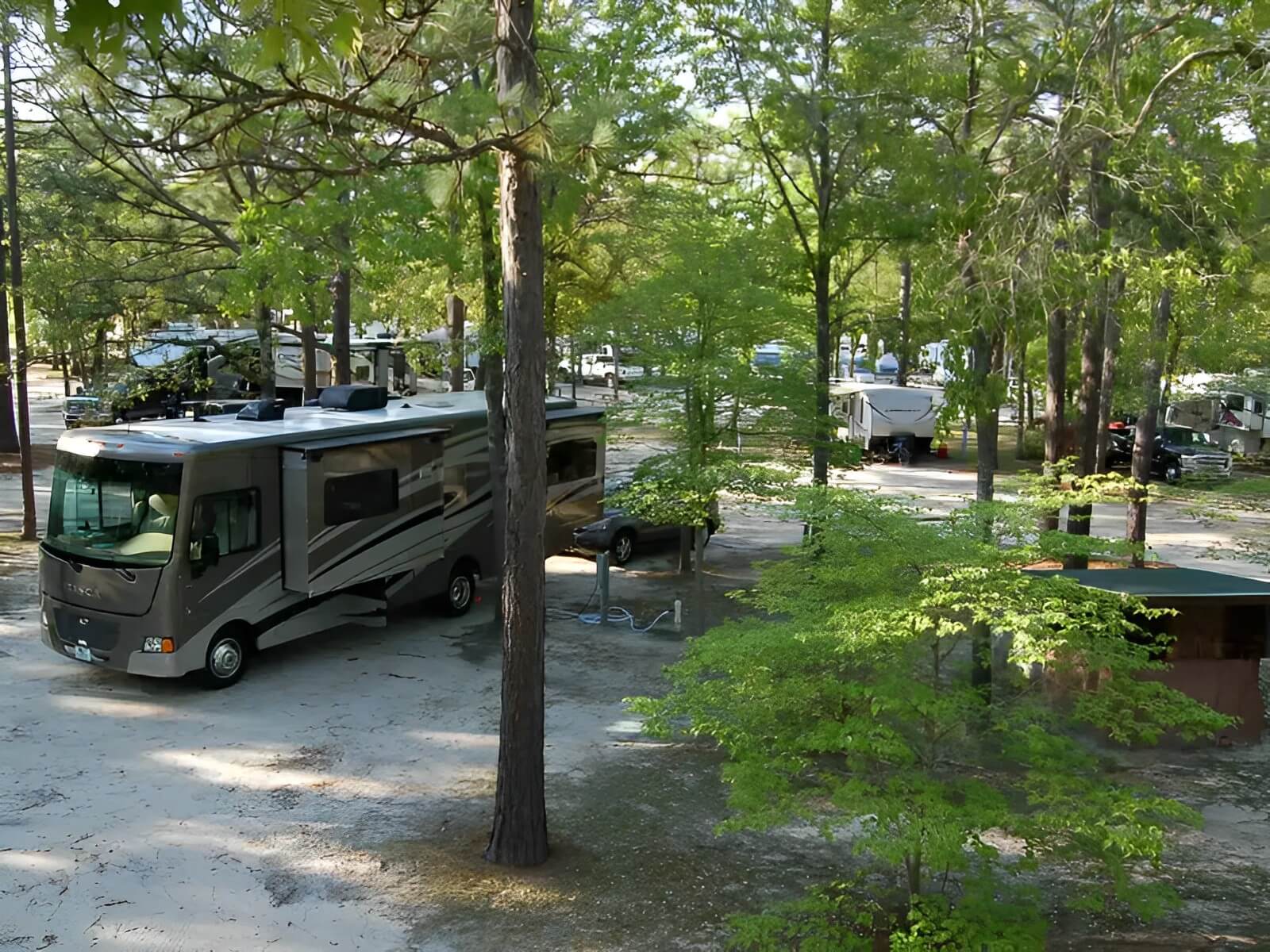
2. Spacious Skies Sandy Run
Fayetteville, NC • 67 miles away
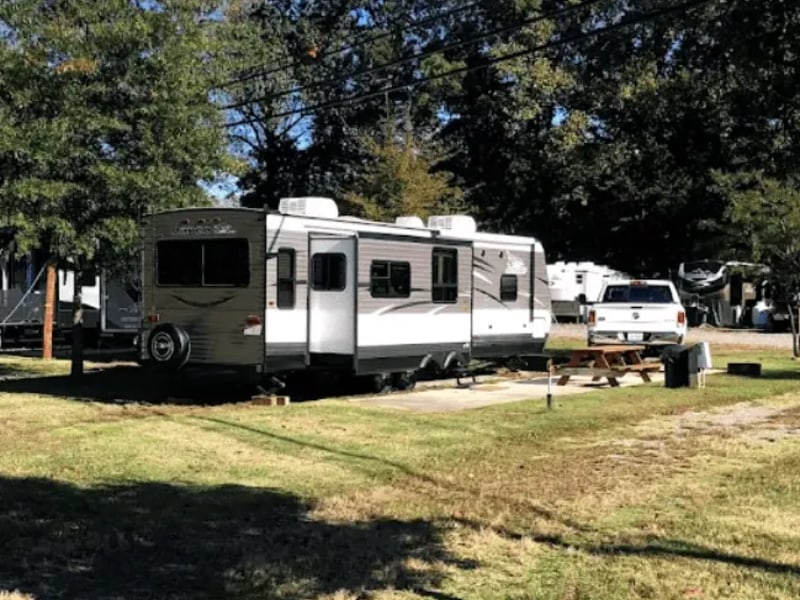
3. Indian Heritage RV Park
Martinsville, VA • 67 miles away
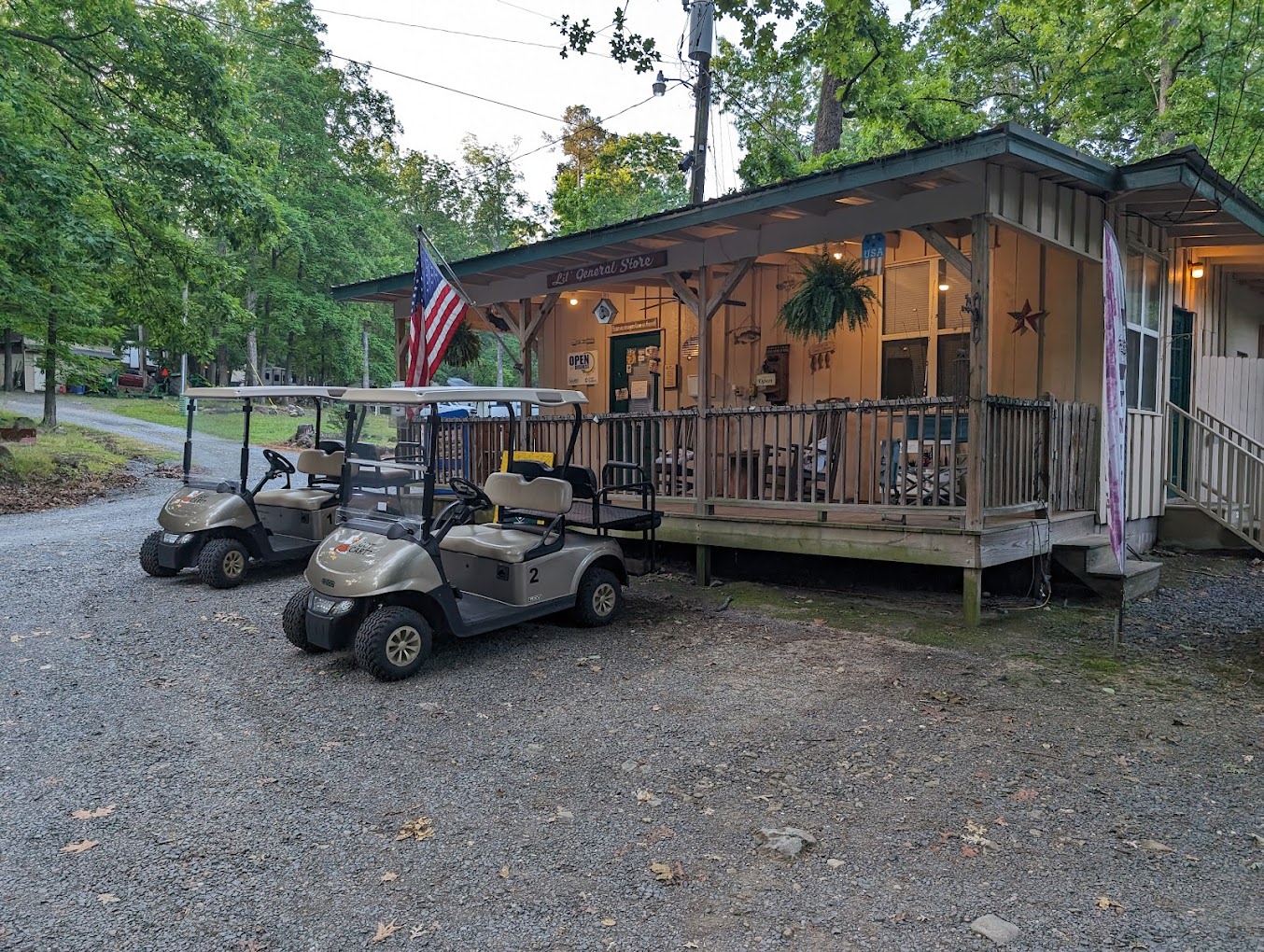
4. Norwood Campground
Norwood, NC • 76 miles away
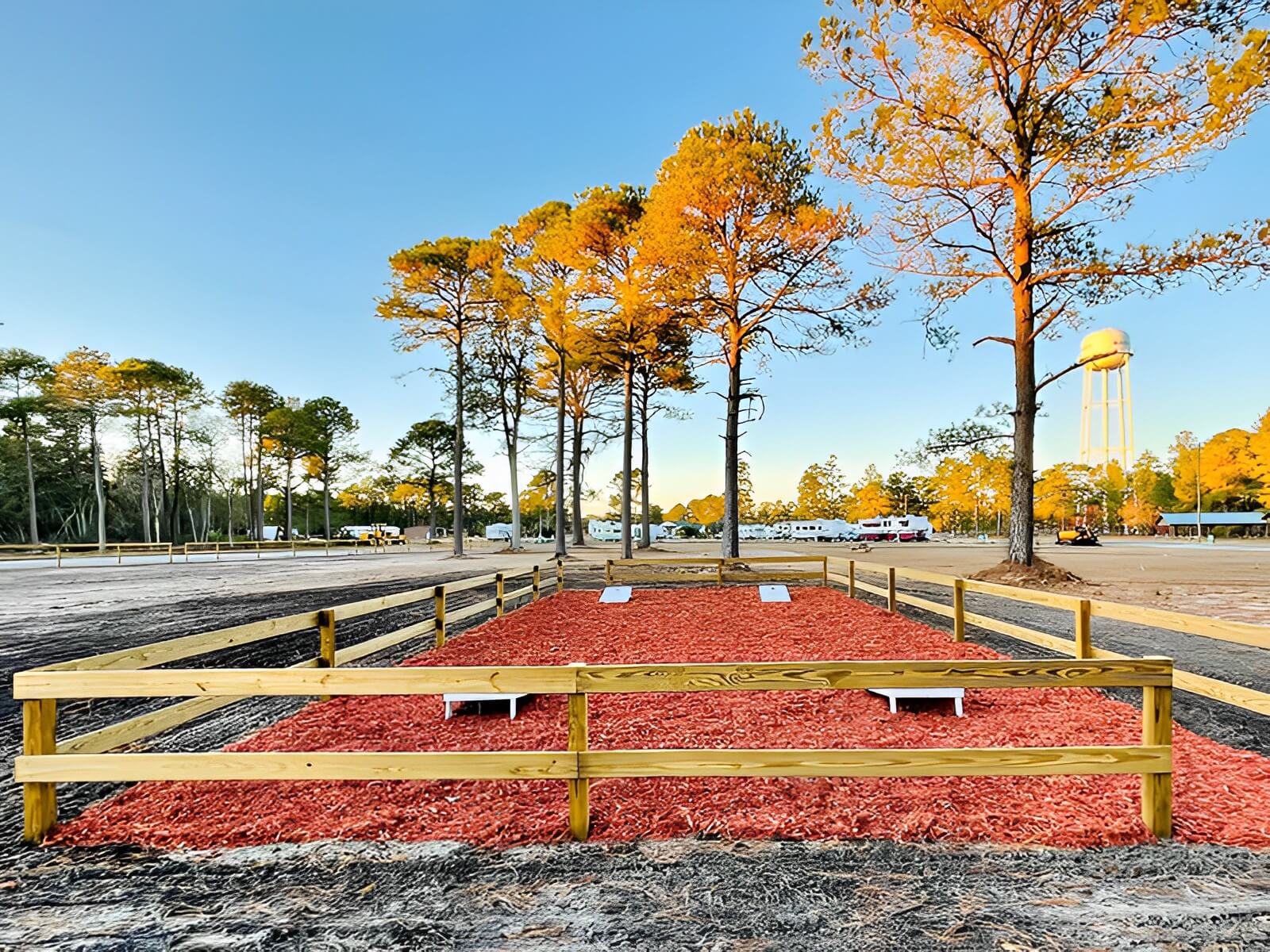
5. Sandy Ridge Campground and RV Resort
Elizabethtown, NC • 94 miles away
Availability and RV fit not guaranteed. Please verify directly with campgrounds before booking.
Chapel Hill, NC • Exact location provided after booking
Rules and policies
- Pet friendly
- Music festival friendly
- Tailgating friendly
- No smoking
- Mileage: 500 free miles / day
- Unlimited generator hours
Frequently asked questions
Q.
What flexibility is available for picking up and dropping off the RV?
A.
I am pretty flexible. I do have a day job but it generally allows me to bounce out and take care of business during the day. Evening and nightime pickups and drop-offs need to scheduled in advance. If your schedule changes at the last minute.. well, emergencies happen and I will do my best to work with you however you'll **need** to keep me informed well in advance because I store the trailer when not in use and I have to fetch it prior to sundown. :-)
Q.
What safety checks should I perform during my towing adventure?
A.
The main things, *IMO*, are: Before driving: 1. Hitch & mount attachment 2. Emergency (seperation) brake engagement cable 3. Tires 4. Lights 5. Clearances 6. Cargo secured 7. Doors closed and secured During Trip: 1. All the above plus: 2. Tire inspection (tread, sidewall) 3. CHECK TEMPERATURES on all 3 axles + both on your truck: (I include a temp gun & log book which you must use after the first 50 miles, then every 100~300 miles as needed) a. Tires b. Bearings: Hub temps c. Brakes









